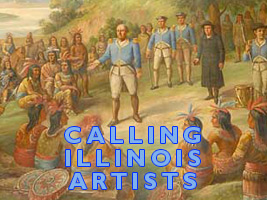- Details
 Did you know, SpaceX’s Falcon 9 rocket has launched Crew Dragon spacecraft “Resilience” to orbit, with a University of Illinois alumnus in tow: Mike Hopkins, the crew commander for the SpaceX mission, is leading a four-person team who will spend the next six months aboard the International Space Station (ISS).
Did you know, SpaceX’s Falcon 9 rocket has launched Crew Dragon spacecraft “Resilience” to orbit, with a University of Illinois alumnus in tow: Mike Hopkins, the crew commander for the SpaceX mission, is leading a four-person team who will spend the next six months aboard the International Space Station (ISS).
Hopkins is a graduate of UIUC, where he played defensive back on the football team and even served as a team captain in 1991. Hopkins, an Air Force Colonel, was selected as an astronaut in 2009. Now, as crew commander, Hopkins is joined by physicist Shannon Walker, Navy Commander and rookie astronaut Victor Glover, and Japanese astronaut Soichi Noguchi, who is one of the few people that has rocketed into orbit aboard three different kinds of spacecraft.
- Details
 Happy National Fast Food Day everyone, it is a day to eat wonderful and delicious food. McDonalds is a major staple of American fast food cuisine. It has been around for decades and is a popular place for families across the country to dine. But, did you know this popular fast food chain’s first franchise restaurant was right here in Illinois?
Happy National Fast Food Day everyone, it is a day to eat wonderful and delicious food. McDonalds is a major staple of American fast food cuisine. It has been around for decades and is a popular place for families across the country to dine. But, did you know this popular fast food chain’s first franchise restaurant was right here in Illinois?
McDonald’s first started as a small burger joint run by the McDonald brothers — Richard and Maurice — in San Bernadino, Cal. However, Ray Kroc was the one that would turn McDonald’s into the major franchise it is today. Kroc chose to begin that journey in 1955 by establishing a McDonald’s restaurant in the Chicago suburb of Des Plaines.
- Details
 World Kindness Day is Nov. 13. It’s a day to promote being kind to each other, to yourself and to the world!
World Kindness Day is Nov. 13. It’s a day to promote being kind to each other, to yourself and to the world!
The occasion was first introduced in 1998 by the World Kindness Movement. This organization was formed at a Tokyo conference in 1997, when Japan brought kindness organizations of multiple nations together and emphasized the necessity of a global kindness movement. Today, over 28 countries are part of the World Kindness Movement group!
- Details
 On this day in 1918, the Allied nations signed a peace agreement with Germany, effectively ending the Great War. A year later, President Wilson proclaimed Nov. 11 as the first commemoration of Armistice Day to celebrate with parades and gatherings.
On this day in 1918, the Allied nations signed a peace agreement with Germany, effectively ending the Great War. A year later, President Wilson proclaimed Nov. 11 as the first commemoration of Armistice Day to celebrate with parades and gatherings.
In May of 1938, Armistice Day became a legal holiday dedicated to the cause of world peace, and to honoring World War I veterans. After World War II and the war in Korea, Congress changed the name of the holiday to “Veterans Day” to honor American veterans of all wars.
- Details
 Nov. 1 is National Author’s Day! One well-known author and playwright from Illinois is Lorraine Vivian Hansberry. Hansberry was born in 1930 in Chicago to Carl Augustus Hansberry, a successful real estate broker, and Nannie Louise Perry, a driving school teacher and ward committeewoman.
Nov. 1 is National Author’s Day! One well-known author and playwright from Illinois is Lorraine Vivian Hansberry. Hansberry was born in 1930 in Chicago to Carl Augustus Hansberry, a successful real estate broker, and Nannie Louise Perry, a driving school teacher and ward committeewoman.
From a young age, Hansberry and her family were involved in the Black community and the fight for civil rights. The Hansberrys received regular visits from people like activist W.E.B. Du Bois, poet Langston Hughes and Olympic gold medalist Jesse Owens.





